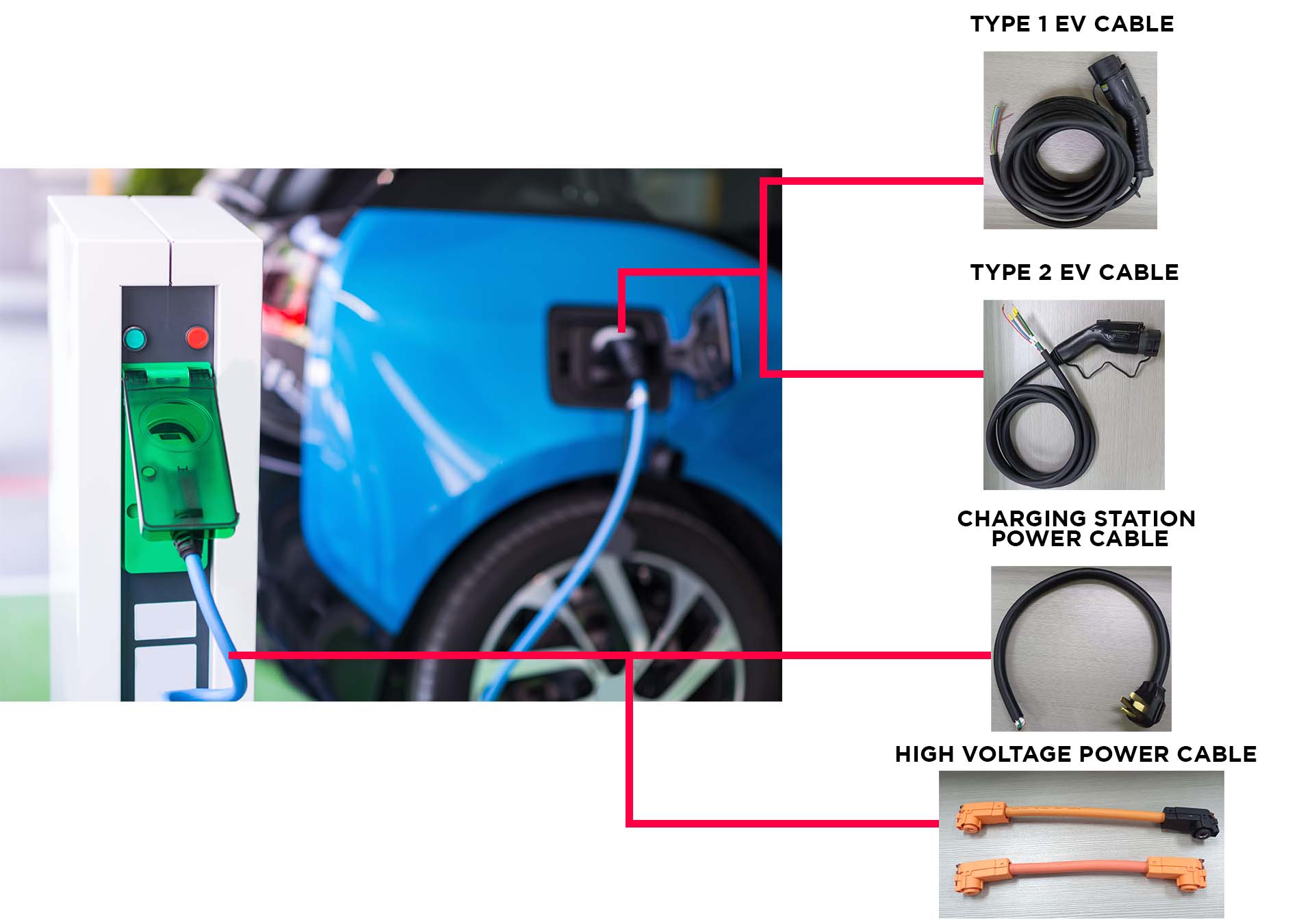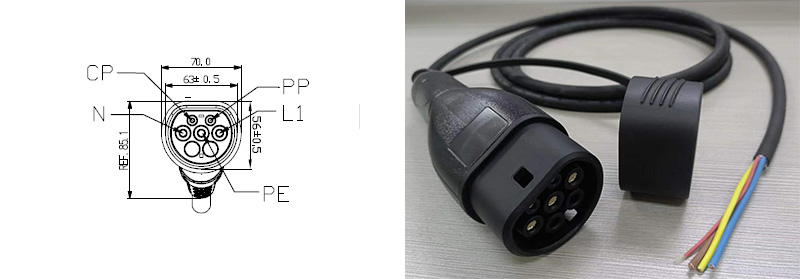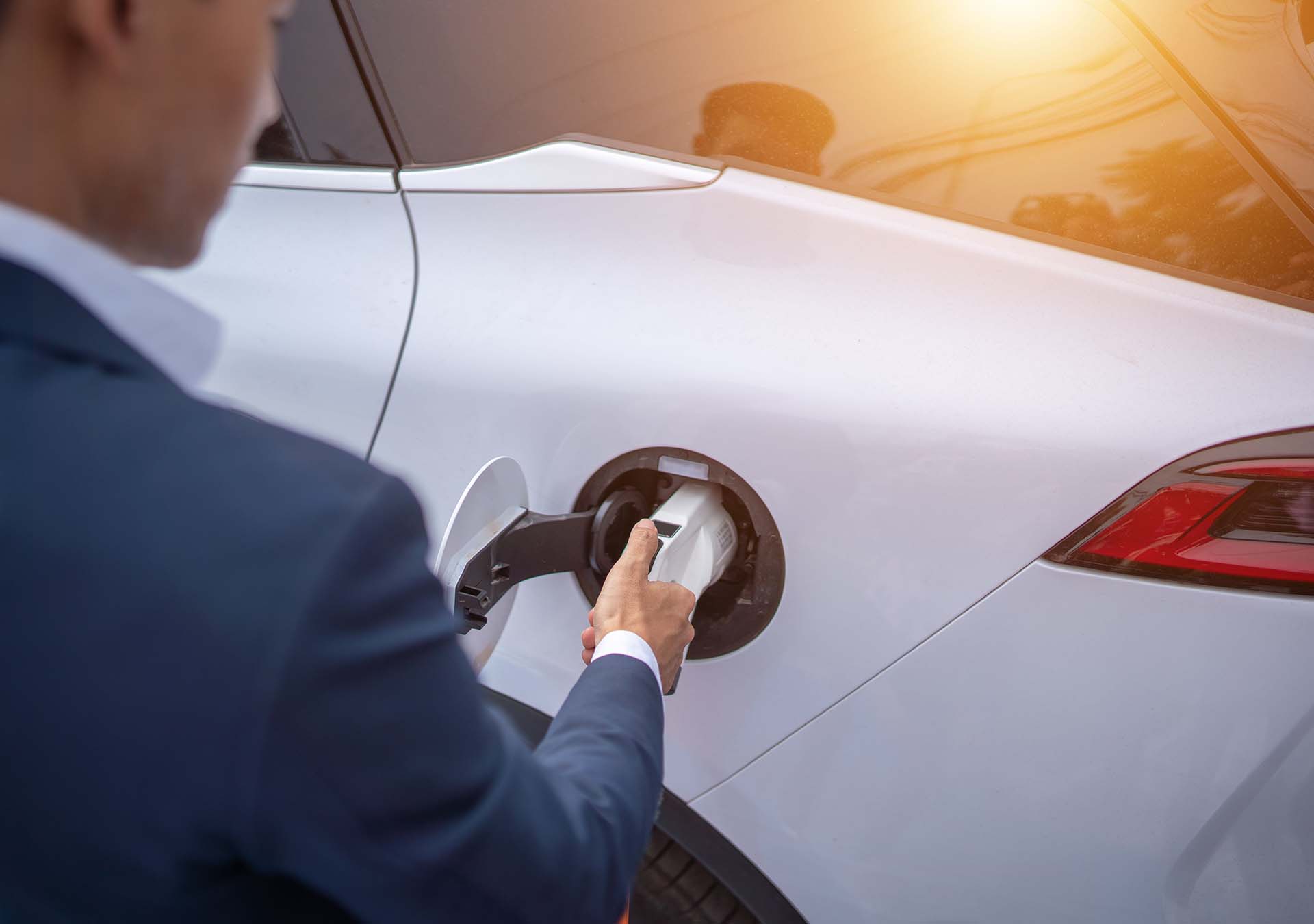Electric Vehicles Cables
Partnering with some of the top automotive suppliers, we have designed and custom built wires and cables for Type 1, Type 2 EV Guns, high voltage cables and charging station power cord.
What is an EV Charging plug?
A charging plug is the connector you place in an electric vehicle’s charging outlet. Similar to how appliances have different plugs depending on the region you’re in, different EV charging plugs and sockets are available for different brands, charging levels, and nations.
What are the charging cables available for electric vehicles?

TYPE 1 PLUG

The type 1 plug is a single-phase plug that supports up to 7.4 kW (230 V, 32 A) of charging power. This is the standard mainly utilized in US made automobiles.
TYPE 2 PLUG

Europe, China and Asia are the primary markets for the triple-phase plug, which is regarded as the industry standard. While charging power levels of up to 43 kW (400 V, 63 A, AC) can be used at public charging stations, charging power levels of up to 22 kW are typical in private areas. The majority of public charging stations have a type 2 socket. With this, any mode 3 charging cable can be used, and both type 1 and type 2 plugs can be used to charge electric vehicles. All of the type 2 Mennekes plugs on the mode 3 wires that are attached to charging stations’ sidewalls.
CHARGING STATION POWER CORD

Large appliances are frequently powered by the NEMA 14-50, a 50 ampere, 125/250 Volt AC, three-pole, four-wire grounding plug and receptacle. It is the most prevalent 240-volt plug in North America and is typically used to provide power for everything from major appliances to recharging automobiles.
The 4-prong and 3-prong plugs can both fit into the NEMA 14-50 receptacle. In case of an unintentional short circuit or grounding problem, the outlet also has a built-in ground fault circuit interrupter (GFCI), which guards against electrical shocks.
Electric Motorcycle

Electric motorcycles are already available, and like electric automobiles, they are gradually gaining popularity both internationally and in Asia. The electric motorbike’s mechanism has essentially remained the same over the years, even if leading automakers have improved its appearance and performance. In essence, an electric motorcycle uses electricity as fuel.
Therefore, an electric motorcycle’s engine runs on energy generated by rechargeable batteries rather than the gas-burning engines of traditional motorcycles. It is much cleaner and more environmentally beneficial to power motorcycles with electricity now. It doesn’t require burning, its component parts last a long time, and it emits no noise or gas pollution.


